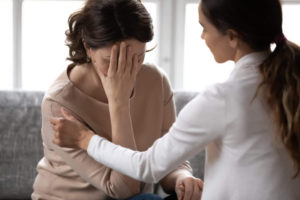In 1998 a small diamond-shaped pill called Viagra was released to the mainstream market. Christened “the little blue pill”, it has changed the lives of millions of men, effectively liberating them from erectile dysfunction, one of the worst fears of any male. Viagra was quickly joined by Cialis and several other drugs, bringing billions of dollars to the pharma industry. Yet while the male market appears to be served quite well (by some accounts, there are over 20 FDA-approved drugs to treat ED), not a single compound has been officially approved to treat sexual dysfunction in women. But this is likely to change – and soon. Several compounds, vying for the title of “the little pink pill”, are in different stages of development and some of them may hit the market as soon as this year. Here’s what every woman needs to know.
The most common form of female sexual dysfunction is a so called Hypoactive Sexual Desire Disorder (HSDD). Hypoactive women describe their symptoms as “declining interest in sex”, “loss of spark”, “always not in the mood”, “lack of passion”, or “being unexcited”, regardless of whom they are with and how long they’ve been together. They are may be in loving relationships, they can perform in bed and even reach orgasms, but they do it mostly in order “not to disappoint my partner”. HSDD may be life-long or situational, caused by, for instance, birth and nursing of a child. If you experience one of these symptoms, you may be suffering from HSDD.
HSDD affects millions of women. Estimates vary. In 2013, New York Times suggested that up to 30% of otherwise healthy women between the ages of 20 and 60 are affected. Sprout Pharmaceutical and Palatin Technologies, two companies actively developing medications to treat HSDD, report 43% and 12% respectively. In any case, we are talking about well over ten million women in the USA alone.
Many women are concerned about “loss of spark”, but are unaware of the fact that HSDD is a disorder. Despite a great deal of distress and tension caused by loss of interest in sex, many women either consider declining desire “a fact of life” or are uncomfortable discussing their libido even with their doctors. This is a huge mistake. Low desire is a medical condition and should not be ignored. Your condition may be caused by treatable factors, such as depression, or side effects from other medications you are taking. Seek medical help for the sake of your own health and the health of your relationships.
As of now, there are no FDA-approved medications to treat HSDD, but several companies are in the race to bring their compounds to market. These drugs have been undergoing extensive clinical trials to prove their effectiveness and safety. The results are promising, but highly individual. Anecdotally, some participants in recent trials conducted at Boston Clinical Trials reported dramatic improvement in their sexual appetites. Yet others experienced limited or no change. The studies were double-blinded, i.e., neither the patient, nor the staff members knew whether a person received the investigational drug or a placebo.
The little pink pill is coming. In 2014, FDA identified HSDD as one of 20 disease areas of high priority. Given the FDA focus and the promise of a multibillion market, there is little doubt that the treatment for HSDD will become a reality soon. Until it happens, however, the only way to access the promising medications are by participating in clinical trials.
To learn more about Boston Clinical Trials and the studies we conduct, including Female Sexual Dysfunction, please click here.








